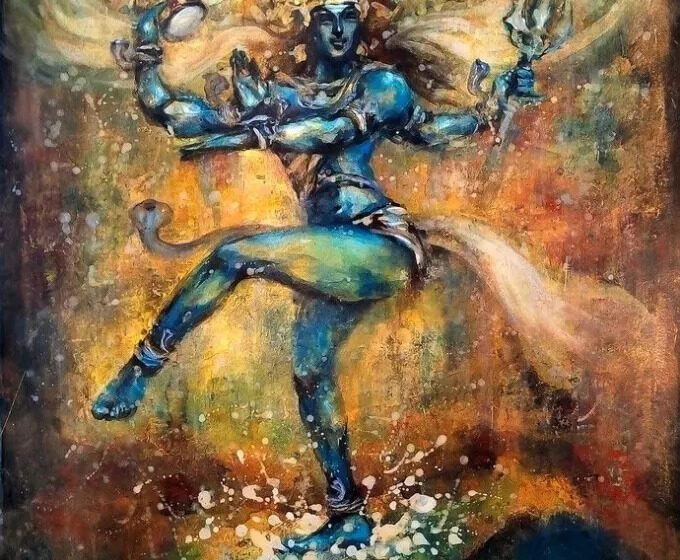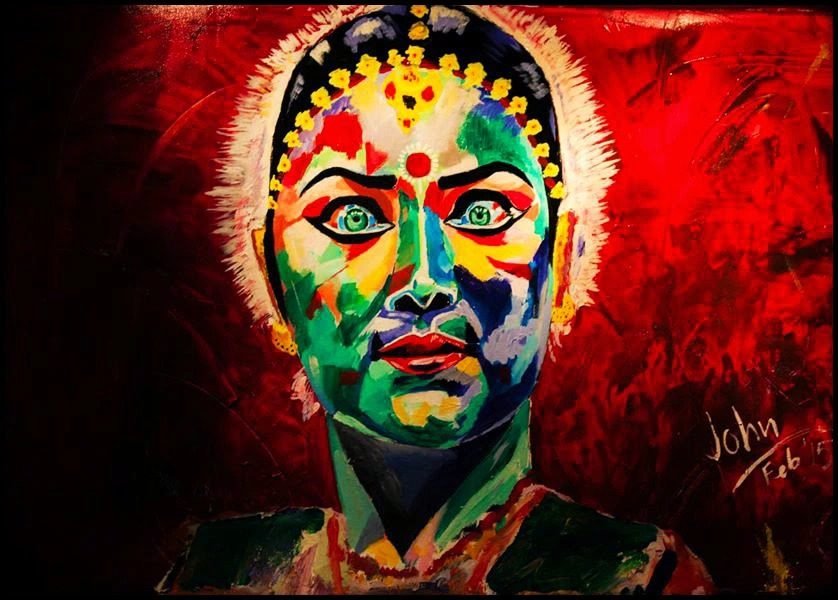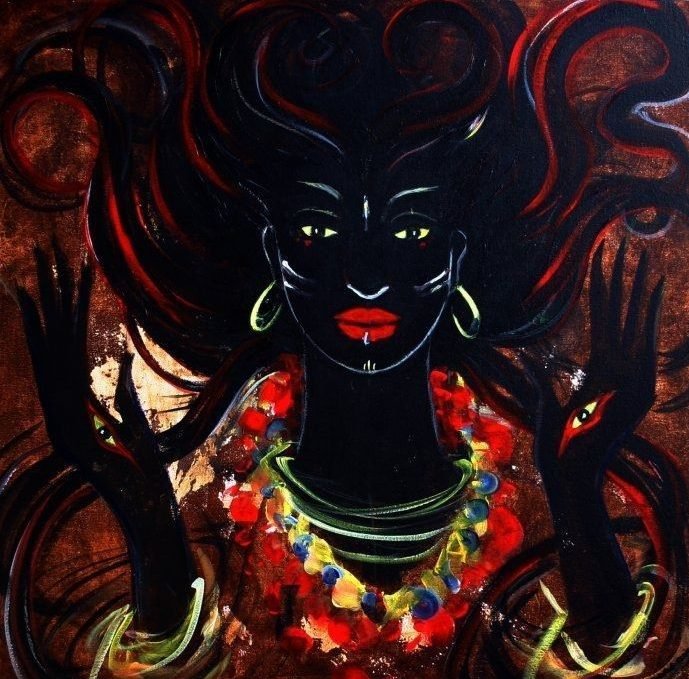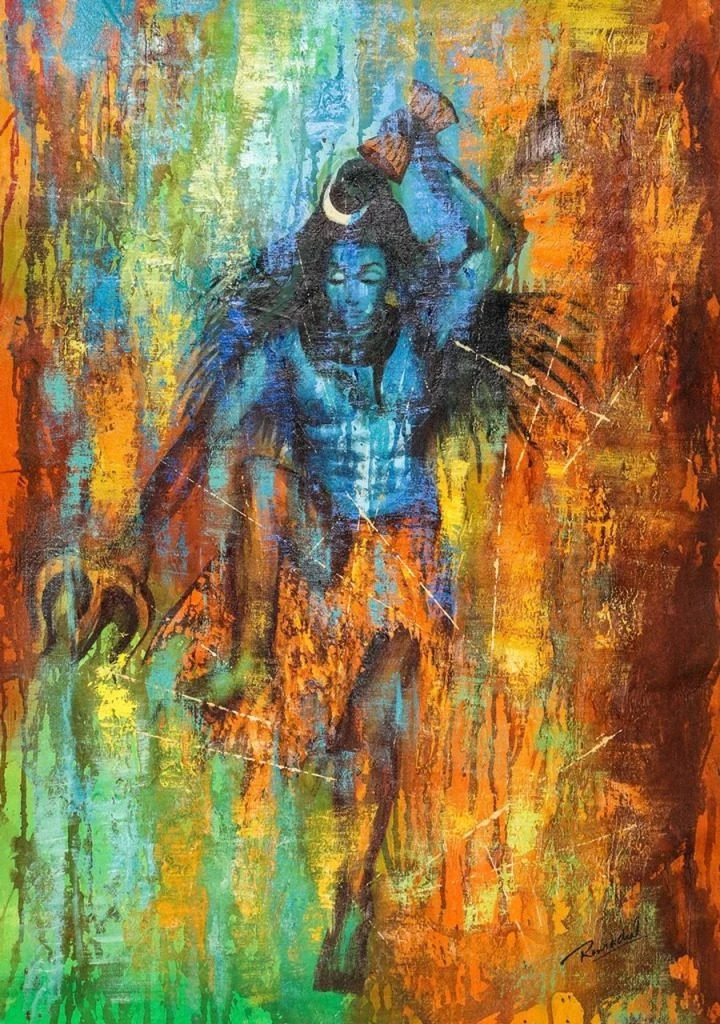Raudra Rasa: Anger as a Catalyst for Change in Indian Epics – The Transformative Power of Divine Wrath

Indian novels are timeless, full of intense emotions that not only define the characters but also determine the course of events. Raudra Rasa, one of the most persuasive emotional impulses—embodying anger and rage—is a transformative force that goes beyond destruction Raudra Rasa is not just anger; It is a powerful catalytic force that makes a difference, serves justice, and sometimes even brings salvation. In characters like Ravana, Bhishma and Durga, we see this driving force of action that affects the universe and the human realm, challenging the boundaries of good and evil This essay explores the origins, interpretations and narrative roles of horror of these characters explains that purposeful anger can be a tool for change.

The Origin and Meaning of Raudra Rasa
Raudra rasa, derived from the Sanskrit root “raudra”, meaning “anger” or “terror”, is a set of nine rasas described in the Natyashastra, an ancient text on Indian theatre, dating from about 200 B.C. Love, compassion and courage are often celebrated, but the association of Raudra Rasa with anger seems to cast a negative light on it but Indian aesthetics interprets Raudra Rasa as a vital force that if used judiciously can restore balance wants to establish a moral order. It’s not just anger for the sake of anger; it is a highly motivated, and often divine, anger.
Traditionally, Raudra Rasa is associated with an aspect of Shiva, Rudra, who represents the harsh and destructive aspect of the divine. The color red symbolizes this taste, and is often depicted as a fiery force that can be corruptible or pure like fire Raudra Rasa is therefore seen as a powerful emotion that manifests itself in mortals or gods and is dominant it reframes destiny and challenges injustice.
Raudra Rasa in Mythology: Key Characters
Ravana – The Demonic Fury and Tragic Hero
In the Ramayana, the authoritarian king of Lanka, Ravana, is the epitome of fear. His ten heads symbolize not only his incomparable intelligence and ambition but also his infinite arrogance and anger. Ravana’s anger is multifaceted; It arises from a place of personal pride and belief in the nature of godliness. As Lord Rama begins to rescue his wife Sita from Ravana, Ravana’s anger intensifies as he considers Rama’s actions an insult to his rights and dignity.

But Ravana’s anger is not only glorious but also tragic, marking the transformation of his figure from that of his revered ruler to his uncontrollable temper Despite his intellectual prowess and devotion to Lord Shiva is clouded by Ravana’s anger and pushed into a deadly conflict which leads to his downfall ; It enables him to be a powerful leader but ultimately swallows him up, revealing the tragic consequences of ego-driven anger. His anger is a reminder that, left unchecked, anger can tear even the most powerful apart.
Bhishma – Controlled Wrath as an Extension of Duty
In the Mahabharata Bhīṣma stands as a symbol of terrible sweetness tempered by discipline and duty Unlike Ravana, whose temper is impetuous and arrogant, Bhishma’s is restrained strength, while Celibacy and loyalty to the Kurus which manifests itself only in respecting his principles and binding him or duty to the throne of Hastinapur, Bhishma is fiercely loyal which often forces him into situations where his anger has to be taken to righteous worship (dharma).

Bhīṣma’s control of anger in the battle of Kurukṣetra turns him into a formidable warrior who commands respect, fear and awe. His anger is not driven by hatred but by a sense of duty, a deep belief in justice and honesty. The terrible sweetness in Bhishma’s character shows how anger along with duty can be a disciplined force that commands respect. It also reveals the tragic irony of his character: the hero bound by his vows, forced to engage in a war he knows is unfair, through Bhishma, Raudrarasa learns self-control, and that means controlled anger can accomplish a higher purpose without descending into violence when a is channeled appropriately.
Durga – Divine Wrath as a Tool for Cosmic Justice
Goddess Durga personifies the divine aspect of Raudra Rasa, where anger acts as the power of righteousness to drive away evil. According to Hindu mythology, Durga was built by the combined wrath of various deities to defeat the demon Mahishasura, a very malevolent force that threatens the universe.

Durga’s Raudrasa is portrayed through the devastating battle against Mahishasura, where her anger manifests itself physically—her weapons, fierce eyes, and each of her many arms are erect for aspects of divine wrath. Durga’s anger in this story is completely revolutionary and pure; It shows the protective anger of a mother, a righteous and necessary anger. The Raudra Rasa by Durga is not only the power of justice but also becomes a symbol of empowerment, showing that divine wrath can indeed be a means of salvation.
The Role of Raudra Rasa as a Transformative Force
Raudra Rasa serves a powerful purpose in Indian fiction, transcending the simple concept of anger as a destructive force. Rather, it is a multifaceted force for personal, social and global change. For Ravana, the terrible taste leads to his tragic downfall and offers a cautionary tale about the dangers of unbridled arrogance and pride. For Bhishma, it is an example of controlled, disciplined anger in line with duty, and demonstrates how anger can be balanced with moral responsibility. For Durga, this is an empowering and purifying force that restores balance and eradicates evil, showing how divine wrath is an instrument used as justice and cosmic order.

Raudra Ras of these characters challenges traditional moral dichotomies, urging readers to see anger as not a negative emotion. In different hands, the flavor of horror reveals its duality—devastating when abused, liberating and cathartic when it meets justice. These vignettes of anger invite consideration of how morbid sweetness can be an important force for challenging injustice and inspiring change, if channeled constructively.
Conclusion: The Relevance of Raudra Rasa in Modern Times
Finding the Raudra Rasa in characters like Ravana, Bhishma and Durga highlights an important fact: Anger, often misunderstood as merely destructive, has the potential to act as a justifying, empowering force for coping and change.

In today’s world, where anger is often viewed with suspicion or fear, the ancient wisdom of the taste of horror offers a different perspective. Directing anger towards the greater good can inspire progress and confront injustice. Durga’s divine anger teaches us that the use of anger for self-defense and justice is justified, while Bhishma’s control of anger teaches the importance of discipline while Ravana’s fall warns us not to let anger if the motivation of pride does not govern our actions.
Understanding Raudra Rasa in these mythical figures gives us insight into the ways in which anger is wisely channeled into positive change in a world that often requires the restraint of strong emotions, the acceptance of Raudra Rasa in responsibility can empower individuals to challenge inequality, inspire resilience and act boldly to light the fire of change.


